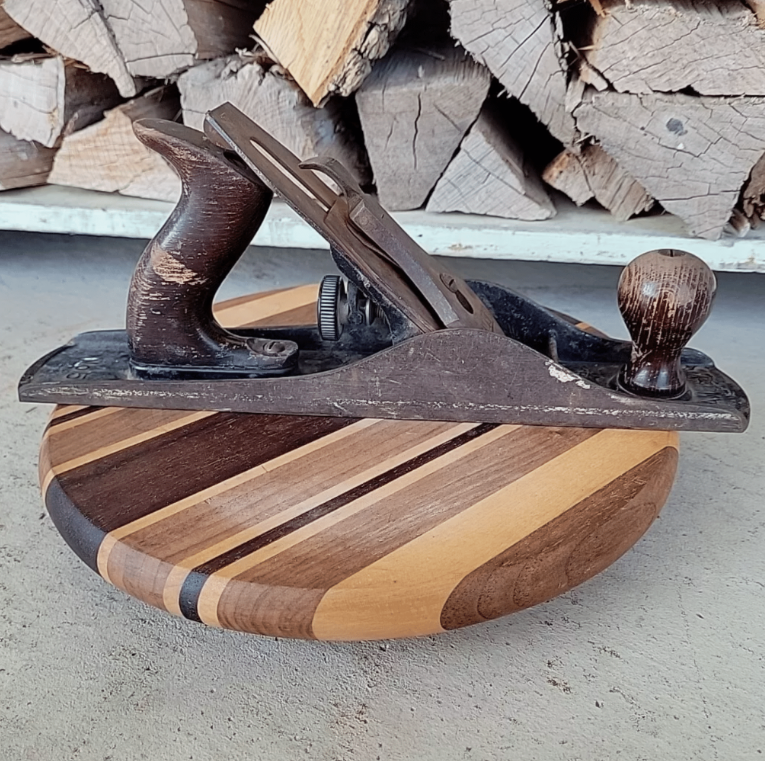The vintage hand plane is a timeless tool that’s been an essential part of woodworking for centuries. Long before power tools took over, skilled artisans relied on this simple yet powerful instrument to shape and smooth wood.
Whether it was polishing rough wood surfaces or crafting intricate furniture pieces, the hand plane’s repetitive swish across the wood, curling away thin shavings, creates a sense of artistry that modern machines struggle to match. It’s a true craft that connects the user with the wood in a way that feels personal and satisfying.
A History of Craftsmanship
The hand plane’s roots stretch back thousands of years. Archaeologists have uncovered early examples in ancient Rome, where fine woodworking demanded the precision of wooden-bodied planes with iron blades. Over time, the design evolved, and by the 19th century, metal-bodied planes became the standard. Iconic companies like Stanley and Record produced high-quality tools that remain highly regarded by woodworkers today.
The Beauty of Vintage Hand Planes
Unlike electric tools, a vintage hand plane offers unmatched control and accuracy. Made from durable hardwood and cast iron, these tools were built to last for generations. Many of these planes were handcrafted with great care, making them not only functional but beautiful works of art.
A vintage hand plane consists of several key components that work together seamlessly:
- Sole: The metal, flat base ensures smooth operation.
- Iron (Blade): The sharp blade that shaves the wood.
- Frog: This adjustable mechanism sets the blade at the perfect angle.
- Handles (Knob and Tote): These wooden handles provide a secure and comfortable grip.
- Cap Iron (Chip Breaker): A crucial component that manages wood shavings and prevents tear-out.
Each of these elements is designed to create the smooth, glossy surface that makes hand-planed wood so visually appealing.
Restoring a Vintage Hand Plane
If you stumble upon an old hand plane at a flea market, estate sale, or in a dusty toolbox, don’t be discouraged by its battered appearance. With a little effort, you can bring it back to life. Here’s how:
- Disassemble and Clean: Use a rust remover or soak the parts in vinegar to get rid of corrosion.
- Sharpen the Blade: A well-honed blade guarantees clean, easy cuts.
- Polish and Lubricate: Apply oil to the metal parts for smooth operation.
- Reassemble and Adjust: Fine-tune the alignment and depth of the blade for optimal performance.
The Joy of Traditional Craftsmanship
Using a vintage hand plane is a unique experience that takes you back to a time when skill, patience, and craftsmanship were the foundation of every project. The rhythmic motion of the tool, the tactile feedback, and the aroma of freshly shaved wood all combine to make this a deeply satisfying process.
Whether you’re a seasoned woodworker or a beginner interested in traditional methods, a vintage hand plane offers a fulfilling connection to the past. In an era dominated by mass production, adopting a tool like this is a tribute to the artistry of handmade work.
So, the next time you come across one, don’t hesitate—it might just become your new best friend in the workshop!

Sophia Reynolds is a dedicated journalist and a key contributor to Storyoftheday24.com. With a passion for uncovering compelling stories, Sophia Reynolds delivers insightful, well-researched news across various categories. Known for breaking down complex topics into engaging and accessible content, Sophia Reynolds has built a reputation for accuracy and reliability. With years of experience in the media industry, Sophia Reynolds remains committed to providing readers with timely and trustworthy news, making them a respected voice in modern journalism.
